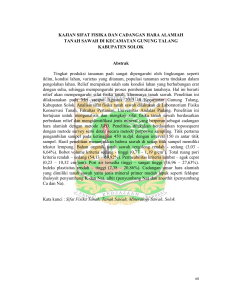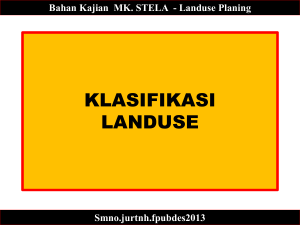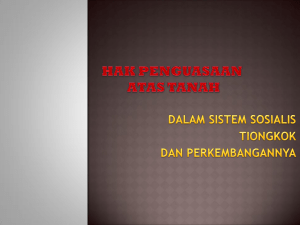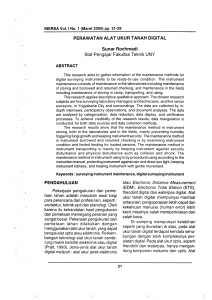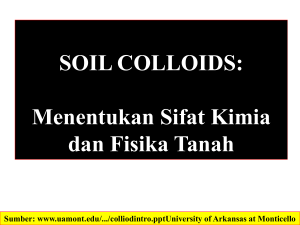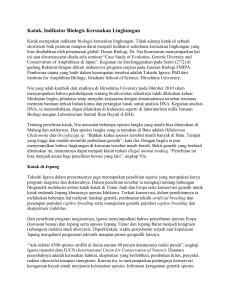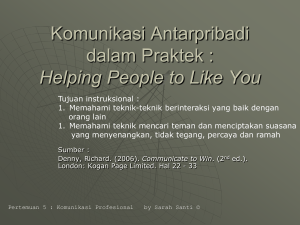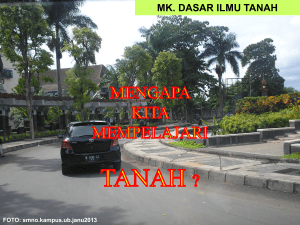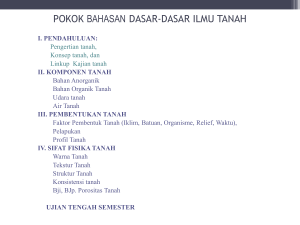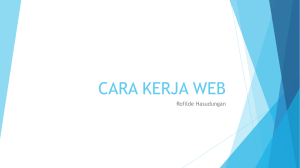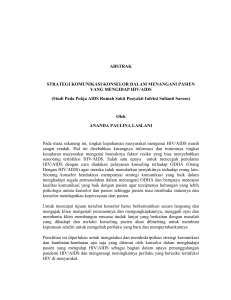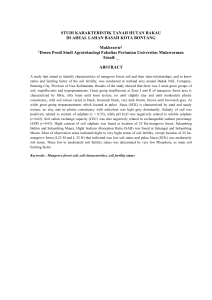Document
advertisement
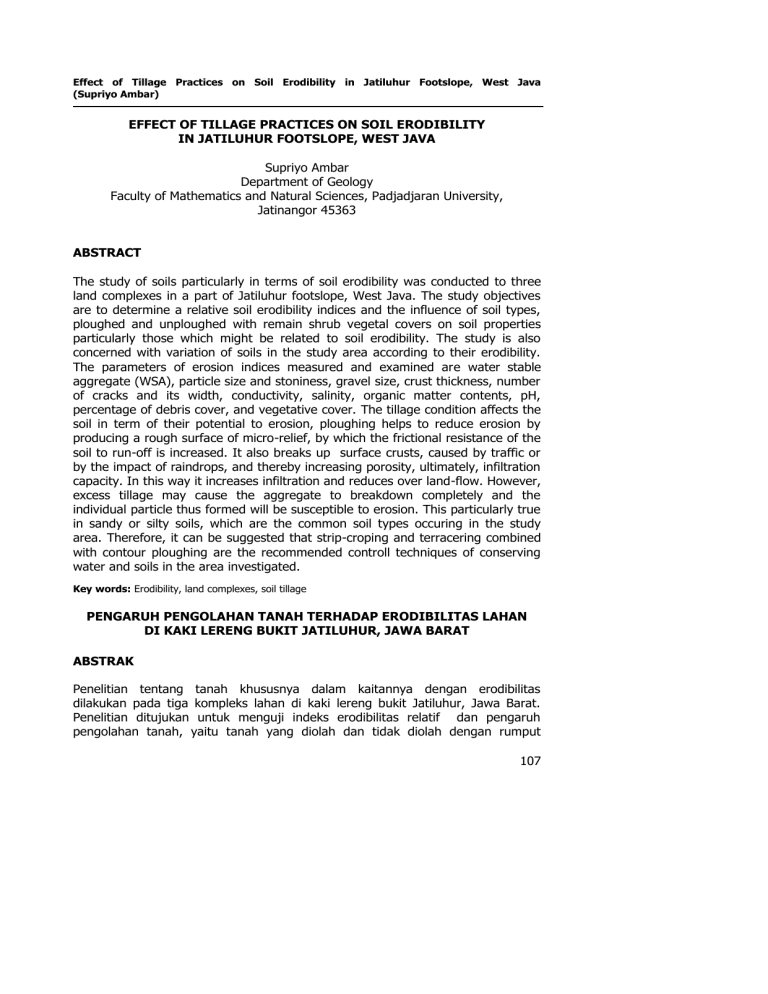
Effect of Tillage Practices on Soil Erodibility in Jatiluhur Footslope, West Java (Supriyo Ambar) EFFECT OF TILLAGE PRACTICES ON SOIL ERODIBILITY IN JATILUHUR FOOTSLOPE, WEST JAVA Supriyo Ambar Department of Geology Faculty of Mathematics and Natural Sciences, Padjadjaran University, Jatinangor 45363 ABSTRACT The study of soils particularly in terms of soil erodibility was conducted to three land complexes in a part of Jatiluhur footslope, West Java. The study objectives are to determine a relative soil erodibility indices and the influence of soil types, ploughed and unploughed with remain shrub vegetal covers on soil properties particularly those which might be related to soil erodibility. The study is also concerned with variation of soils in the study area according to their erodibility. The parameters of erosion indices measured and examined are water stable aggregate (WSA), particle size and stoniness, gravel size, crust thickness, number of cracks and its width, conductivity, salinity, organic matter contents, pH, percentage of debris cover, and vegetative cover. The tillage condition affects the soil in term of their potential to erosion, ploughing helps to reduce erosion by producing a rough surface of micro-relief, by which the frictional resistance of the soil to run-off is increased. It also breaks up surface crusts, caused by traffic or by the impact of raindrops, and thereby increasing porosity, ultimately, infiltration capacity. In this way it increases infiltration and reduces over land-flow. However, excess tillage may cause the aggregate to breakdown completely and the individual particle thus formed will be susceptible to erosion. This particularly true in sandy or silty soils, which are the common soil types occuring in the study area. Therefore, it can be suggested that strip-croping and terracering combined with contour ploughing are the recommended controll techniques of conserving water and soils in the area investigated. Key words: Erodibility, land complexes, soil tillage PENGARUH PENGOLAHAN TANAH TERHADAP ERODIBILITAS LAHAN DI KAKI LERENG BUKIT JATILUHUR, JAWA BARAT ABSTRAK Penelitian tentang tanah khususnya dalam kaitannya dengan erodibilitas dilakukan pada tiga kompleks lahan di kaki lereng bukit Jatiluhur, Jawa Barat. Penelitian ditujukan untuk menguji indeks erodibilitas relatif dan pengaruh pengolahan tanah, yaitu tanah yang diolah dan tidak diolah dengan rumput 107 Jurnal Bionatura, Vol. 8, No. 2, Juli 2006 : 107 - 121 semak tersisa serta karakter tanahnya terhadap erodilitas tanah. Penelitian juga mengkaji variasi erodibilitas pada berbagai jenis tanah di daerah yang diteliti. Indeks erodibilitas yang diukur dan diuji terdiri atas agregat stabilitas air (WSA), ukuran butir dan kandungan batuan, ukuran kerikil, ketebalan rekahan, jumlah dan lebar rekahan, konduktivitas, salinitas, kandungan bahan organik, pH, persentase seresah penutup tanah, dan persentase vegetasi penutup tanah. Kondisi pengolahan tanah berpengaruh terhadap potensi erosi tanah, pembajakan membantu mengurangi erosi karena terciptanya kekasaran relief mikro, sehingga daya gerus air larian terhadap tanah berkurang. Ia juga memecah kerak muka tanah, sehingga meningkatkan porositas, yang akhirnya memperbesar kapasitas infiltrasi, dan menghambat air limpasan. Meskipun demikian, pengolahan atau pembajakan tanah yang berlebihan dapat menghancurkan keseluruhan agregat tanah, sehingga daya tahannya terhadap tenaga erosi makin kecil, terutama terjadi pada tanah pasiran dan lempungan yang banyak dijumpai di daerah yang diteliti. Sehubungan dengan hasil penelitian tersebut disarankan agar penanaman sistem surjan, sengkedan dan dikombinasikan dengan pembajakan sejajar kontur dijadikan teknik pengendalian dan konservasi air dan tanah di daerah penelitian. Kata kunci : Erodibilitas, kompleks lahan, pengolahan tanah 108
